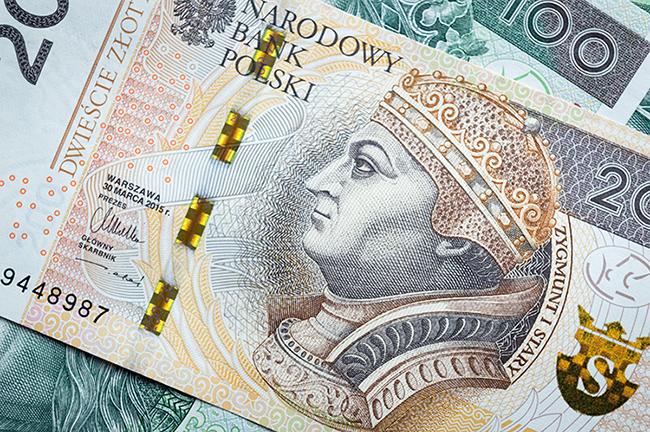PIE: Zloty should weaken in the short term, may strengthen in the long term
Short-term economic correlations suggest that the zloty is too strong and should weaken strongly in the following quarters, analysts of the Polish Economic Institute (PIE) estimate. In contrast, inferences based on long-term dependencies are to the contrary - the zloty has room to strengthen, they stress.
"PLN's prospects for 2024 remain unclear. Short-term economic correlations suggest that the PLN is too strong and should weaken strongly in the following quarters. The NBP surveys also argue for this reasoning. They indicate that the current EUR/PLN exchange rate is close to the export profitability barrier (4.24). The counter-argument is the strong inflow of investments, which can sustain the value of the Polish currency. On the other hand, inferences based on long-term correlations are contrary - the PLN has room to strengthen, according to the Macroeconomic Monthly.
The argument against a strong currency is the large change in the real exchange rate (REER). The PLN has strengthened significantly against other currencies, even though theoretically the real value should rather be stable, the analysts pointed out.
What is the real exchange rate (REER)? In simplest terms, it is the exchange rate adjusted for the difference in inflation between countries. This category is somewhat less frequently reported in the media, while its analysis is more relevant to the fundamentals of the economy. In principle, the REER can change in two ways - either by appreciating the nominal (normal exchange rate) or by maintaining the same nominal exchange rate with higher inflation. The strengthening of the PLN in Poland in recent months has resulted from both of these processes, the report explained.
Short-term arguments suggest a weakening of the PLN in the following quarters. Studies show that large increases in the real exchange rate tend to reverse (e.g. Ca'Zorzi and Rubaszek, 2020). Hodrick-Prescott filter analysis confirms these conclusions - the effect of excessive and too rapid appreciation of the exchange rate is to unwind through weakening. Moreover, REER fluctuations in Poland are among the largest among countries in the region. Slightly smaller fluctuations are observed in the neighbouring Czech Republic, and much smaller in Slovakia, which is a member of the euro area, it was reported.
At the same time, PIE points out that this reasoning does not exclude a long-term appreciation of the exchange rate. Therefore, CEE currencies should strengthen with convergence, but excessive exchange rate movements in either direction should be reversed.
The PLN was strengthening steadily until the financial crisis in 2008. BIS data shows that the real value of the PLN increased from 1994 to 2008. - In total, it increased by 44.9% during this period. Such a trend should not come as a surprise - economic studies indicate that in converging economies (i.e. catching up with developed countries) rapid economic growth is accompanied by currency appreciation (e.g. Halpern and Wyplosz, 1997; Rubaszek, 2009). Therefore, fundamental arguments support a further appreciation of the PLN, the report further states.
Source: PIE and ISBnews









